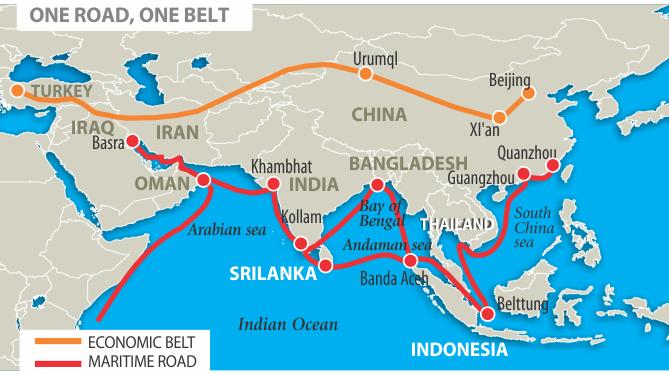Connectivity is a shared interest for China and Southeast Asia, and the Maritime Silk Road (MSR) represents part of the continuing efforts to highlight this . Southeast Asia is important for China’s neighborhood and periphery diplomacy; hence the management or resolution of regional concerns, such as the South China Sea (SCS) disputes, represents a continuing challenge for Chinese foreign policy. China’s increasing presence and power projection in the SCS worries naval powers concerned about potential curtailment of their longstanding freedom of navigation and overflight for their naval and air force assets in the strategic waterway. Furthermore, China’s increasing external threat has led militarily disadvantaged littoral states to expand security engagement with external powers in order to counter or deter Chinese assertive actions in the disputed sea. Hence, the sea that geographically binds China and maritime Southeast Asia also constitutes a space, which became the subject of competing territorial and maritime claims and further complicated by the participation of extra-regional powers. However, while disputes persist, proximity and contiguity (by land and sea) can actually be used to foster mutually beneficial ties which can serve as foundations for improved relations and enduring regional peace and order. MSR can help in this regard.
In 2013, Chinese President Xi Jinping announced the 21st Century MSR in an address in the Indonesian Parliament. MSR is the maritime component of the larger One Belt, One Road (OBOR, also known as the Belt and Road Initiative) that would connect China with Eurasia, the Middle East and Africa. MSR signals China’s deep interest in enhancing and accelerating all-around connectivity with Southeast Asia, including on the maritime front. Choosing regional leader Indonesia, which also strategically links the Pacific and Indian Oceans, as the venue to officially announce MSR suggests the high importance attached by China to Southeast Asia and to maritime connectivity.

With China championing regional connectivity and Southeast Asia supporting the same, better traction is expected. MSR can anchor on numerous prior bilateral and regional deliberations, proposals and agreements on connectivity and economic linkagesto get regional buy-in. In 2003, the Philippines launched the Strong Republic Nautical Highway, an integrated system of RORO (roll-on, roll-off) ferries and highways to link the archipelagic country. In 2014, Indonesia came up with the Maritime Axis/Fulcrum doctrine which encompasses 5 pillars – maritime culture, resource, connectivity, diplomacy and strategic bridge between two oceans. In mainland Southeast Asia, there was a proposal to link ASEAN with China through a series of highways and railways . From this vantage point, MSR taps into regional connectivity aspirations.
评论列表 ( 0 )